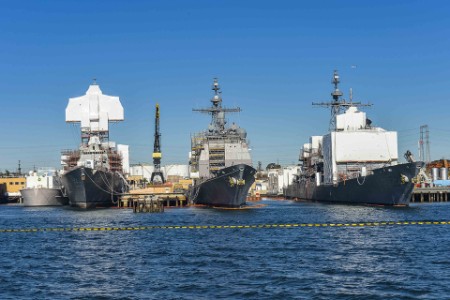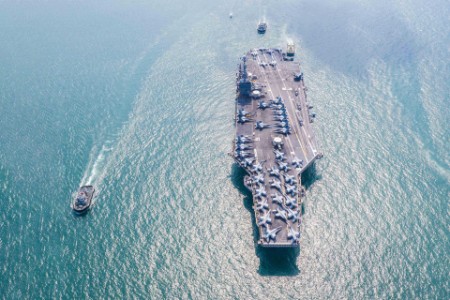As the world transforms, how do you modernize for mission success?
The Navy was experiencing a gap in the number of F/A-18 fighter jets that were ready for deployment. A large number of them were sitting in hangers waiting for maintenance. Asking for taxpayer money to purchase more jets was not a viable option year after year. The Navy engaged Ernst & Young LLP to help close the widening shortfall, drive a sense of urgency in mission readiness, and provide a sustainable solution to assess and improve readiness.
Meeting key readiness outcomes is a major initiative for the Navy, and a constant top priority for the Secretary of the Navy. The aim is to align the critical naval enterprises on key objectives and improvement initiatives through enhanced accountability, leveraging analytical tools and predictive modeling to make data-driven decisions, analyzing key performance metrics, and identifying barriers to execution. It is critical to continuously improve on-time delivery of ships, submarines and aircraft, as well as manage the logistics and resources for Naval activities across the globe. In short, senior Navy leaders need to look at what may be hindering them – recognizing that it will take more than pure intuition to fix it.
Performance to Plan (P2P) provides a solution that leverages digital leading practices for better outcomes. This focused leadership approach improves readiness by identifying quantifiable metrics and applying predictive and prescriptive analytics to rigorously strive for success.
Adm. Bill Lescher said, “The Navy behavior prior to P2P structure would have been, ‘You go buy all the parts you can. You go buy all the people you can in the depots. You go buy all the capacity you can in repair velocity, and let’s see where we end up.’ But we have a different tool now: we have the ability to be predictive.”¹
Building the supply chain of the future: watch the webinar
Agency leaders explore how organizations are approaching supply chain risk management and the data strategy behind it.
The Navy behavior prior to P2P structure would have been, ‘You go buy all the parts you can. You go buy all the people you can in the depots. You go buy all the capacity you can in repair velocity, and let’s see where we end up.’ But we have a different tool now: we have the ability to be predictive.

A data-driven management approach enables better outcomes.
The Navy’s top priority was to focus on the shortfall in F/A-18 jets. Over time, that effort expanded to include surface ship and submarine maintenance, as well as how to effectively assign sailors to fill the gaps for deployed ships. Then, public shipyards were added. Are big carriers and submarines getting through the shipyard maintenance periods on time? Why do they often experience delays? What are the logistics of moving weapons, aircraft, emissions, food, supplies and people from one area of the world to another? How can the Navy manage the quality of maintenance activities – and at what cost?
The P2P framework employs a driver-based performance management method to address these issues. Using this approach, the Navy has identified strategic objectives and focused on performance metrics to measure success and achieve better outcomes. Predictive modeling enabled the Navy to utilize historical data to forecast future performance based on existing process capabilities.
Benefits of P2P:
- Aligns the enterprise on key objectives and initiatives, focusing on what matters
- Utilizes predictive analytics to understand “cause-and-effect” relationships
- Offers greater visibility into operational metrics that drive better outcomes
- Establishes a high level of discipline on how metrics are defined and reported
- Enables decision-makers – in this case, Navy leaders – to prioritize actions.

An eye-opening cultural change
Over the past three and a half years, EY has seen a major cultural shift in how the Navy operates its fleet of ships and aircraft. The focus has moved from activities and mitigating risks to accelerating performance improvement and measuring outcomes.
The P2P approach is bringing a new type of discipline to leadership, relying on data to drive insights that inform decision-making. This is creating a culture of transparency, accountability, accelerated learning and timely data-driven decisions.
EY is helping Navy leaders monitor progress and expand efforts in areas they have targeted for improvement. Shawna F. Li, Senior Manager, Strategy Consulting, Government and Public Sector, Ernst & Young LLP says, “We see many changeovers in Commands, in both Admirals and Captains. EY provides the continuity by educating and coaching these new leaders on what P2P is, how it works and why it should be part of their readiness infrastructure. The Navy can move forward with confidence, knowing they have a consistent approach and the right analytical tools in place to manage performance.”
The Navy can move forward with confidence, knowing they have the right analytics tools in place to manage performance.

